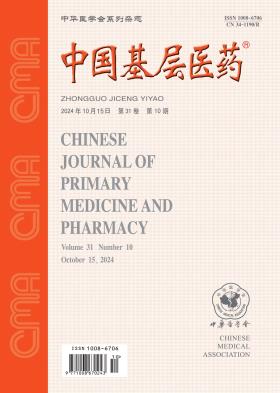Clinical effect of directional soft-channel puncture and suction drainage in the treatment of spontaneous cerebral hemorrhage in basal ganglia and its influence on neurological function
引用次数: 0
Abstract
Objective To investigate the clinical effect of directional soft-channel puncture and suction drainage in the treatment of spontaneous cerebral hemorrhage in basal ganglia and its influence on neurological function. Methods From January 2017 to December 2018, 61 patients with spontaneous cerebral hemorrhage in basal ganglia were selected in the First People's Hospital of Jiande.According to the random table method, they were divided into control group (30 cases) and observation group (31 cases). The control group was treated conservatively, while the observation group was treated with directional soft-channel puncture and suction drainage combined with conventional therapy.The therapeutic effects, NIHSS score, ADL score, brain edema volume change and complications were compared before treatment, 1 week after treatment and 2 weeks after treatment. Results The total effective rate of the observation group (96.77%) was higher than that of the control group (76.67%) (χ2=3.989, P<0.05). The NIHSS score of the observation group was (16.54±2.19)points at one week after treatment and (9.12±1.24)points at two weeks after treatment, which were lower than those of the control group [(19.98±1.65)points and (13.25±2, 37)points] (t=6.911, 8.568, all P<0.05). The ADL score of the observation group was (43.42±5.67)points at one week after treatment and (63.98±3.46)points at two weeks after treatment, which were higher than those of the control group [(37.89±2.86)points and (52.37±4.10)points] (t=4.785, 11.967, all P<0.05). The volume of brain edema of the observation group was (12.08±2.14)mL at 1 week after treatment and (4.37±0.89)mL at 2 weeks after treatment, which were lower than those of the control group [(16.89±3.20)mL and (9.74±1.07)mL] (t=6.922, 21.339, all P<0.05). The incidence of complications in the observation group (6.45%) was lower than that in the control group (30.00%) (χ2=5.720, P<0.05). Conclusion Directional soft-channel puncture and suction drainage is effective in the treatment of spontaneous cerebral hemorrhage in basal ganglia, which can reduce the degree of neurological deficit and with fewer complications, and it is worthy of clinical study. Key words: Cerebral hemorrhage; Paracentesis; Neurological deficit; Activity of daily living; Brain edema volume; Complications定向软通道穿刺抽吸引流治疗基底节自发性脑出血的临床疗效及其对神经功能的影响
目的探讨定向软通道穿刺抽吸引流治疗基底节区自发性脑出血的临床疗效及其对神经功能的影响。方法选择建德市第一人民医院2017年1月至2018年12月收治的61例基底节区自发性脑出血患者,按随机表法分为对照组(30例)和观察组(31例)。对照组采用保守治疗,观察组采用定向软通道穿刺吸引引流结合常规治疗。比较治疗前、治疗后1周和治疗后2周的疗效、NIHSS评分、ADL评分、脑水肿体积变化及并发症。结果观察组总有效率(96.77%)高于对照组(76.67%)(χ2=3.989,均低于对照组[(19.98±1.65)分和(13.25±2.37)分](t=6.911,8.568,均P<0.05),高于对照组[(37.89±2.86)分和(52.37±4.10)分](t=4.785、11.967,均P<0.05),观察组治疗后1周脑水肿体积为(12.08±2.14)mL,观察组并发症发生率(6.45%)低于对照组(30.00%)(χ2=5.720,P<0.05)神经节,可以降低神经功能缺损的程度,并发症少,值得临床研究。关键词:脑出血;胸腔穿刺术;神经系统缺陷;日常生活活动;脑水肿体积;并发症
本文章由计算机程序翻译,如有差异,请以英文原文为准。
求助全文
约1分钟内获得全文
求助全文
来源期刊
CiteScore
0.10
自引率
0.00%
发文量
32251
期刊介绍:
Since its inception, the journal "Chinese Primary Medicine" has adhered to the development strategy of "based in China, serving the grassroots, and facing the world" as its publishing concept, reporting a large amount of the latest medical information at home and abroad, prospering the academic field of primary medicine, and is praised by readers as a medical encyclopedia that updates knowledge. It is a core journal in China's medical and health field, and its influence index (CI) ranks Q2 in China's academic journals in 2022. It was included in the American Chemical Abstracts in 2008, the World Health Organization Western Pacific Regional Medical Index (WPRIM) in 2009, and the Japan Science and Technology Agency Database (JST) and Scopus Database in 2018, and was included in the Wanfang Data-China Digital Journal Group and the China Academic Journal Comprehensive Evaluation Database.

 求助内容:
求助内容: 应助结果提醒方式:
应助结果提醒方式:


